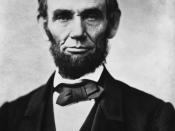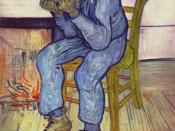I. Assessment of William Styron
A. Introduction to Major Depressive Disorder
Unipolar depression is one of the most common forms of psychopathology. According to the Epidemiologic Catchment Area (ECA) study, the lifetime risk for major depressive disorder is approximately five percent. Common symptoms of major depressive disorder include, but are not limited to, feelings of disappointment and despair, fatigue, loss of energy, changes in appetite and/or sleep disturbances, feelings of worthlessness, concentration problems, thoughts of suicide, slowed thinking, and chronic tension or anxiety. Depressed patients often subjectively describe the disorder as a feeling of drowning or suffocation.
B. Application of Diagnostic (DSM-IV) Criteria
The Diagnostic and Statistical Manual of Mental Disorders-IV (DSM-IV) lists nine symptoms of major depressive disorder, at least five of which must have been present during the same two week period and represent a change from previous functioning in order for a diagnosis to be made.
Also, at least one of the symptoms must either be depressed mood or loss of interest or pleasure. William Styron, author of Darkness Visible: a Memoir of Madness clearly depicts all nine symptoms in his autobiographical account of depression.
The first of the nine symptoms listed in DSM-IV is depressed mood most of the day, nearly every day, as indicated by subjective report (for example, feels sad or empty) or observation made by others (for example, appears tearful). Styron repeatedly shows symptoms of and describes depressed mood. He explains depression as "the gloom," (pg. 7), anxiety, dread, drowning, suffocation, "the devastation taking place in my mind" (pg. 49), intense misery, numbness, despair, "the gray drizzle of horror" (pg. 50), desolation, torture, and suffering. Others had noticed outward symptoms of Styron's depressed mood. A photographer that had shot Styron for a magazine article called him back for a second shoot because...


